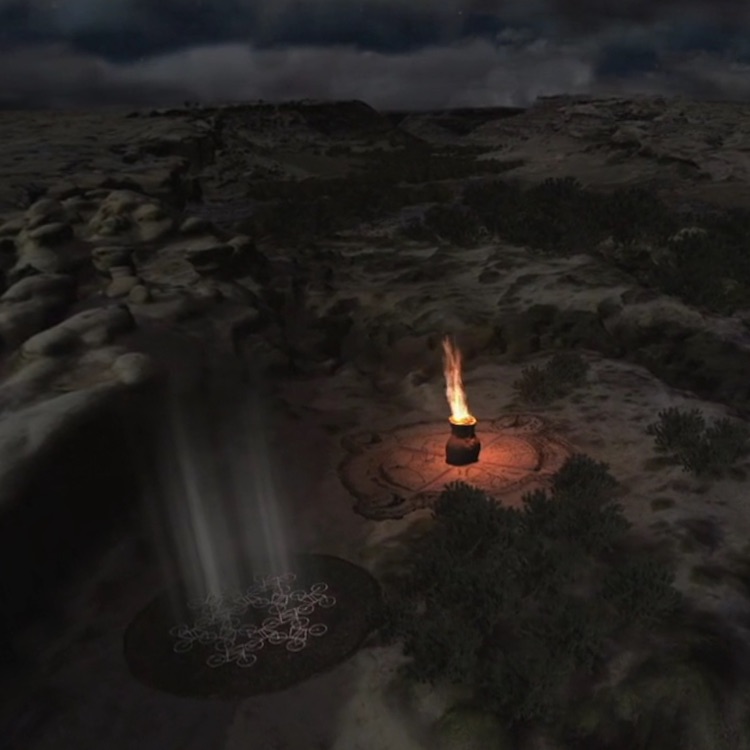NAVAJO NATION––For this Cfile video segment, we dug up this gorgeous, 360-degree immersive video from 2014 designed around temporary sand art installation Pull of the Moon––an internationally acclaimed collaboration by cultural icons New York City-based Diné artist from the Navajo Nation Bert Benally and Chinese artist Ai Weiwei.
Created for Navajo TIME 2014 (Temporary Installations Made for the Environment), the original ground installation was nestled deep in the dramatic scenery of remote Coyote Canyon on the Navajo Nation, but as New Mexico Arts writes, the installation’s ephemeral reality (most of it blew away within a day) commanded documentation.
Due to the temporal nature of Pull of the Moon, it was captured for the AIPP program on 3D film by xRez Studios and then reconfigured and projected onto a mobile geodesic dome that was first installed on Museum Hill’s Milner Plaza in Santa Fe, which attracted nearly 1,800 visitors in one weekend in July 2014.
The goal is to share the extraordinary Pull of the Moon immersive experience with as many people as possible. As a result, one of our most temporary installations becomes one of our most impactful due to this innovative approach of sharing it with the public.

The installation was composed of a pair of large earth drawings, one by each of the artists; Benally contributing a large circle of burning symbology with an enormous vase at its center, and Ai, a pattern of interlocking white bicycles (a reference to his 2003 installation Forever) created from the dust of 250lbs of ground porcelain that was shipped all the way from China, artnet writes.
“The shards were intentionally placed there as evidence of the powder’s origin…I think this is an interesting idea because we can only see ourselves, our past, through material evidence such as these shards. It is important to pass on to future generations where we are from and to give a glimpse of the mind and soul of the people living in that time.”––Ai Weiwei
The project began as a fruitful cold call to Ai’s studio at the suggestion of Navajo TIME coordinator and curator Eileen Braziel,
“For him to be interested in a project like this is like one in a million…He immediately said he was interested.” ––Eileen Braziel
Artnet added the landscapes of Coyote Canyon reminded Ai of the labor camp where he grew up in Western China during the Cultural Revolution.
Benally said of the project:
“The concept is based on Navajo aesthetics, the idea that for the Navajo, art is more about the process rather than the finished product.” You can watch an abridged version of the original here:
Or watch the entire experience here:
The geodesic dome and video was exhibited at Art Basel Miami in December 2014.
Garth Clark and Cfile Foundation worked on this project as media consultants.
Check out our previous coverage of this exhibition.
Love or loathe these videos from the world of contemporary ceramic art and contemporary ceramics? Share your thoughts in the comments section below.

Why would anyone think the incredible natural landscape of Coyote Canyon needs any human “art” to make it better? Presumptuous and pretentious.
Alas, you misunderstand. Coyote Canyon was chosen for a ritual, its temporary, all the elements dissolve in to the ground. Its not a permanent work but a conversation between to artists.